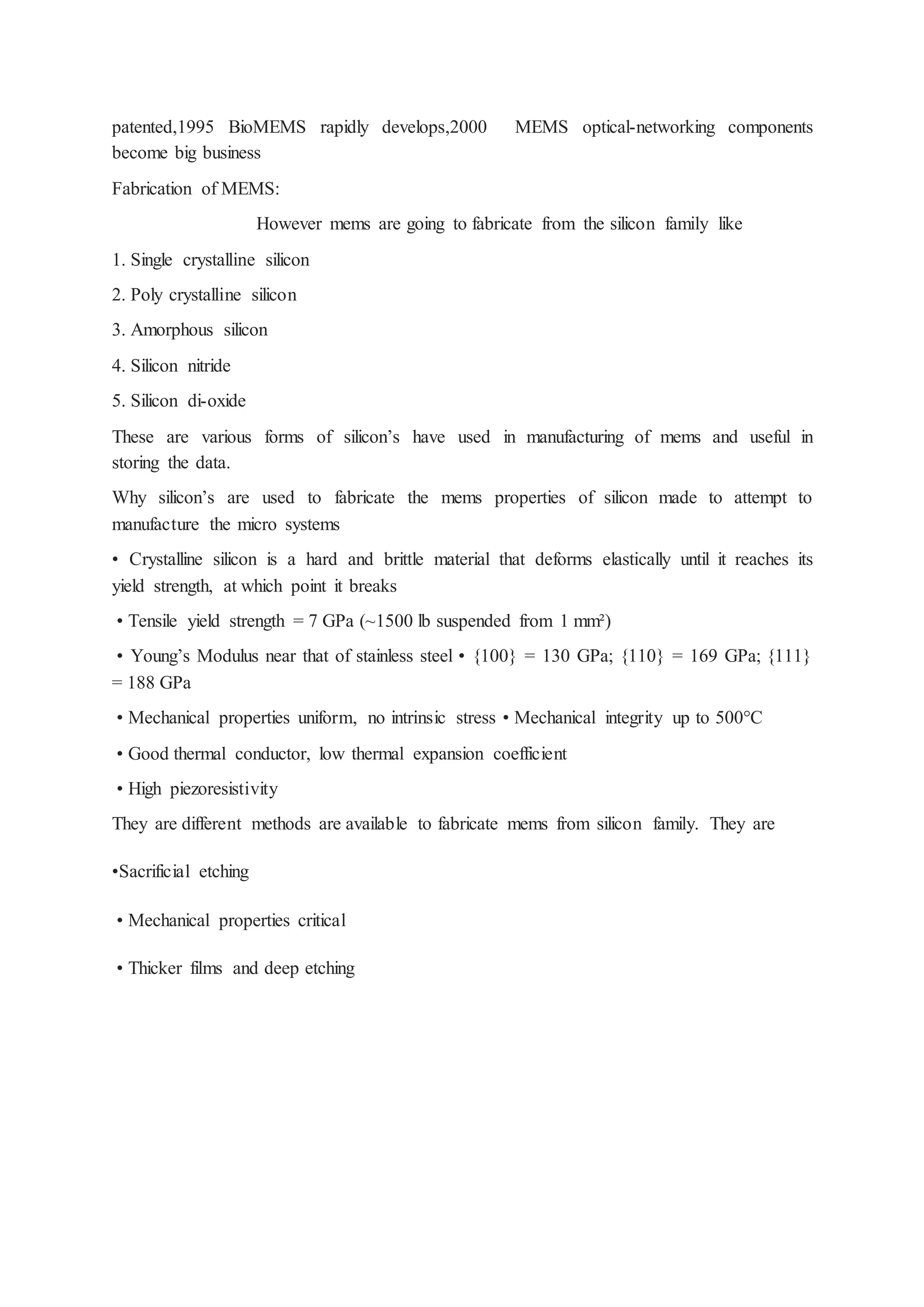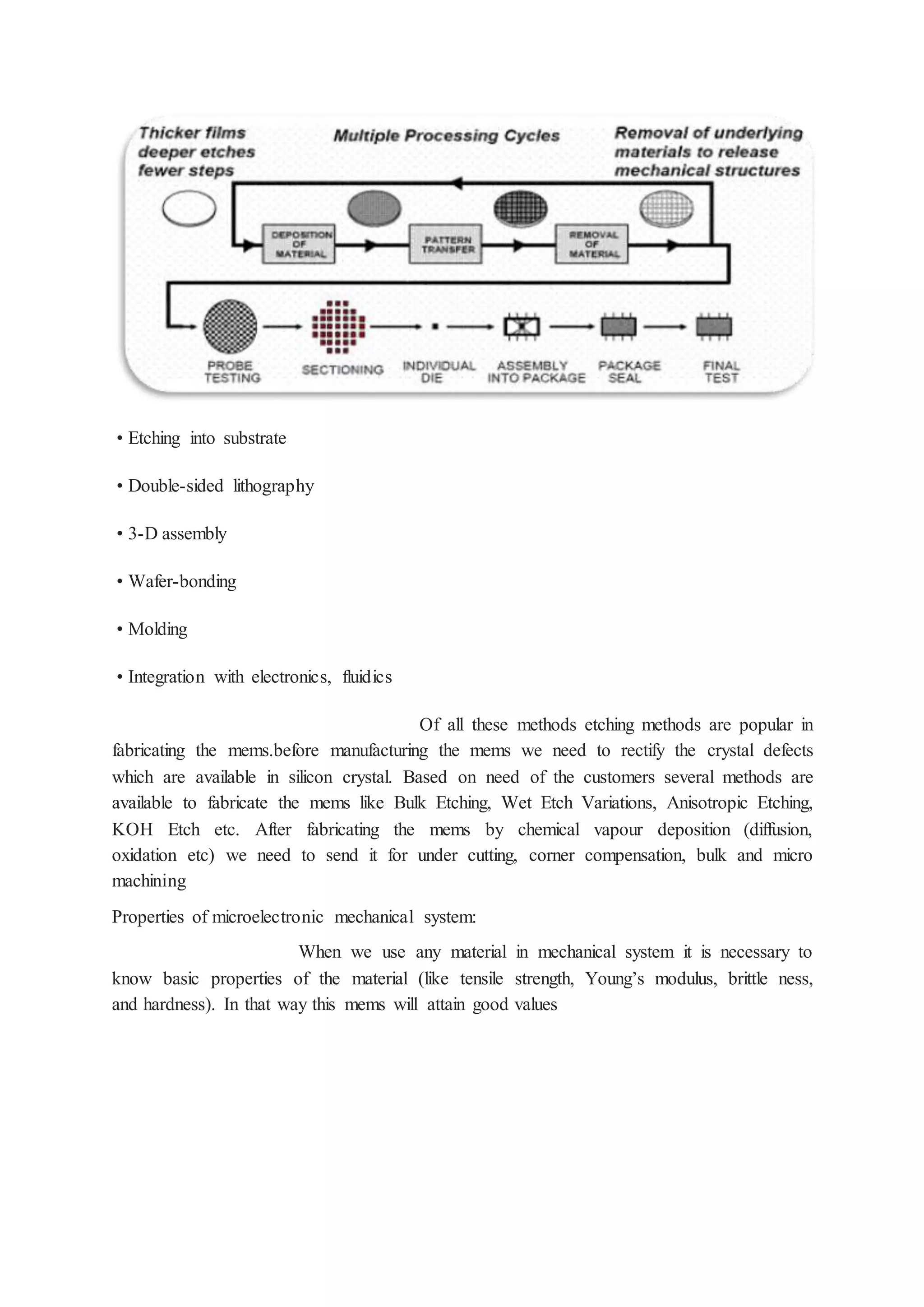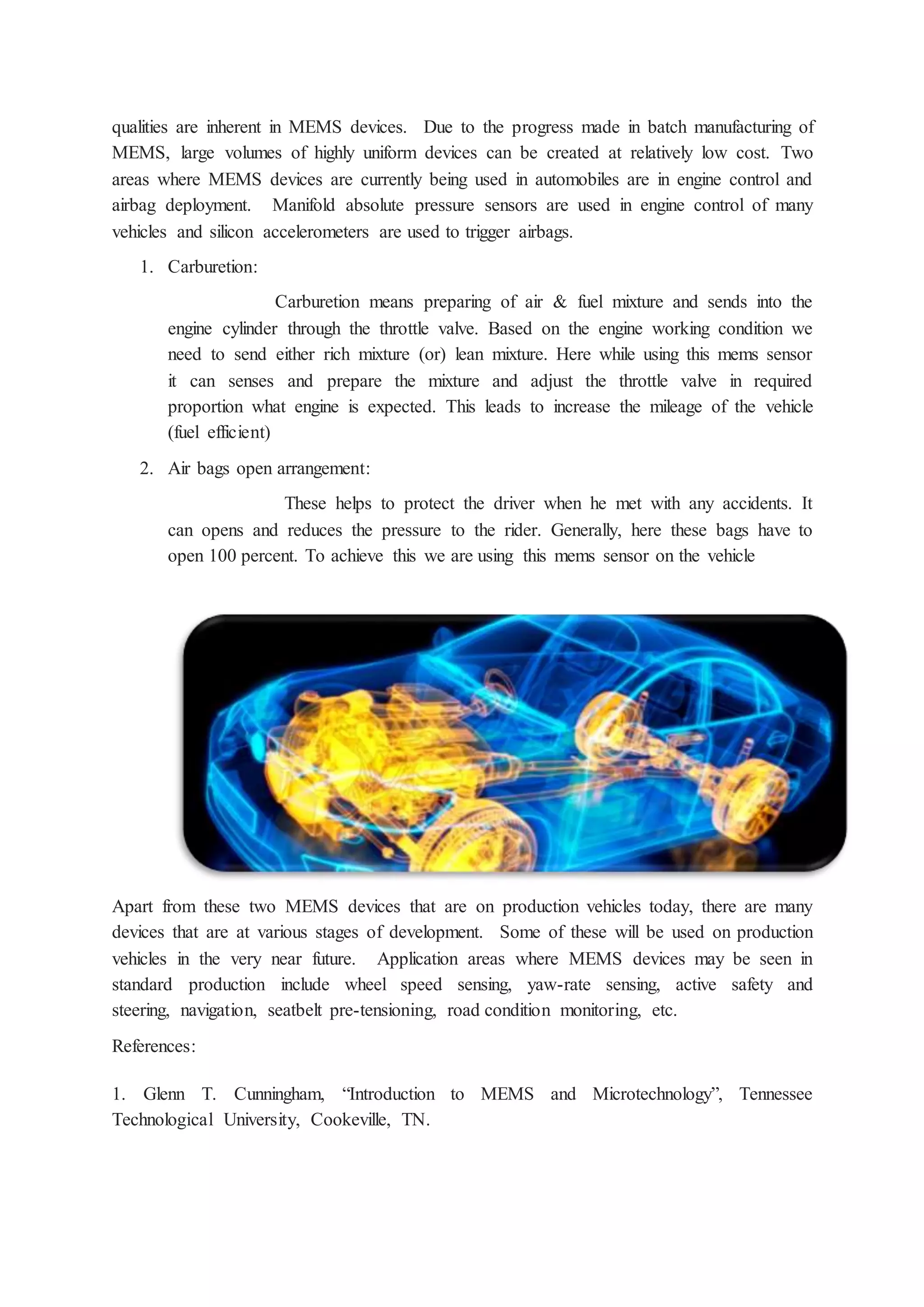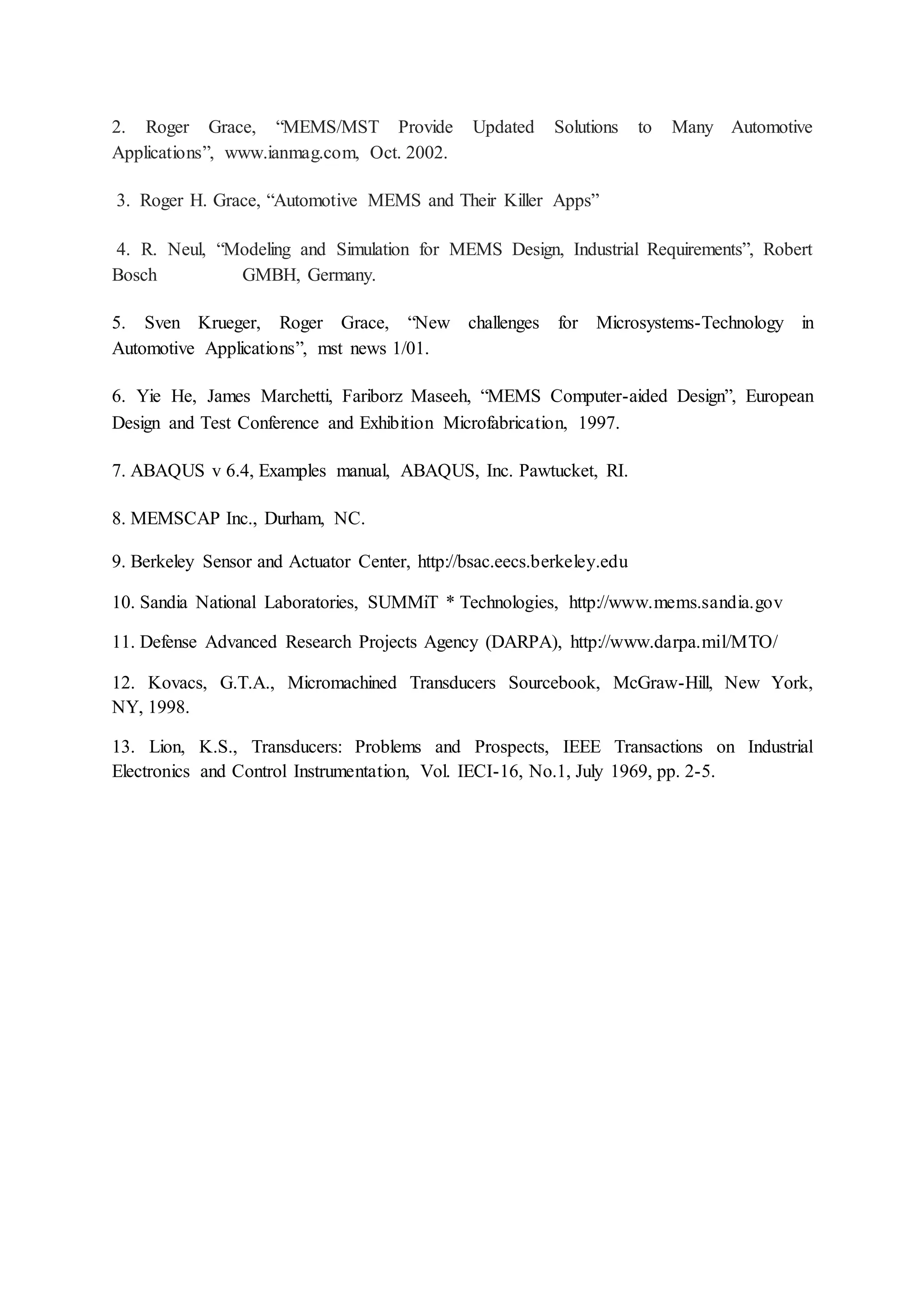Microelectronic mechanical systems (MEMS) combine mechanical and electrical components on a micrometer scale using microfabrication technology. MEMS can range in size from 100 micrometers to 100 nanometers. They utilize expertise from fields like integrated circuit fabrication, mechanical engineering, materials science, and more. Common MEMS devices include sensors for airbags, inkjet printer heads, and medical devices. MEMS have applications across many industries and have the potential to revolutionize products by integrating silicon microelectronics with micromachining.
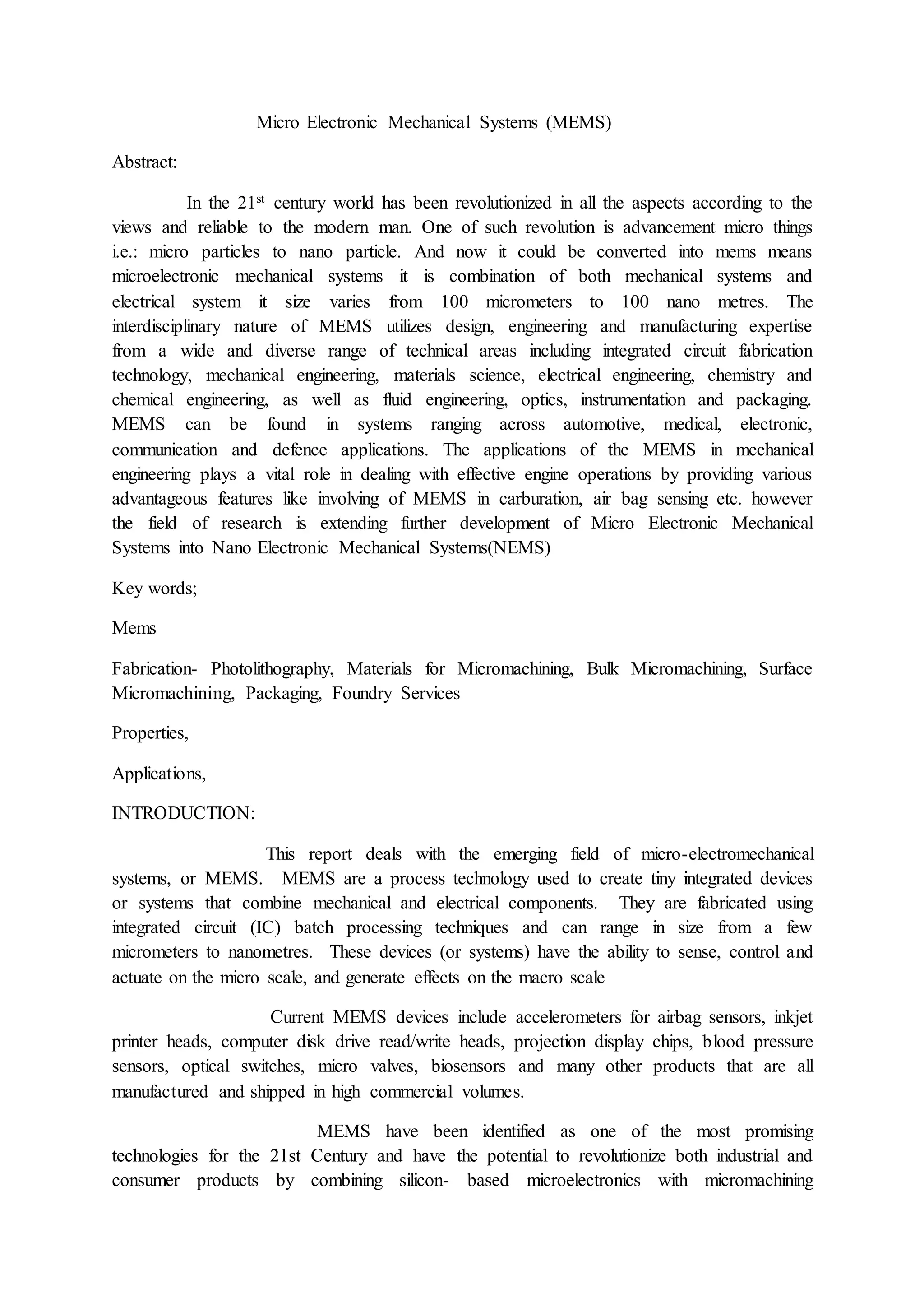
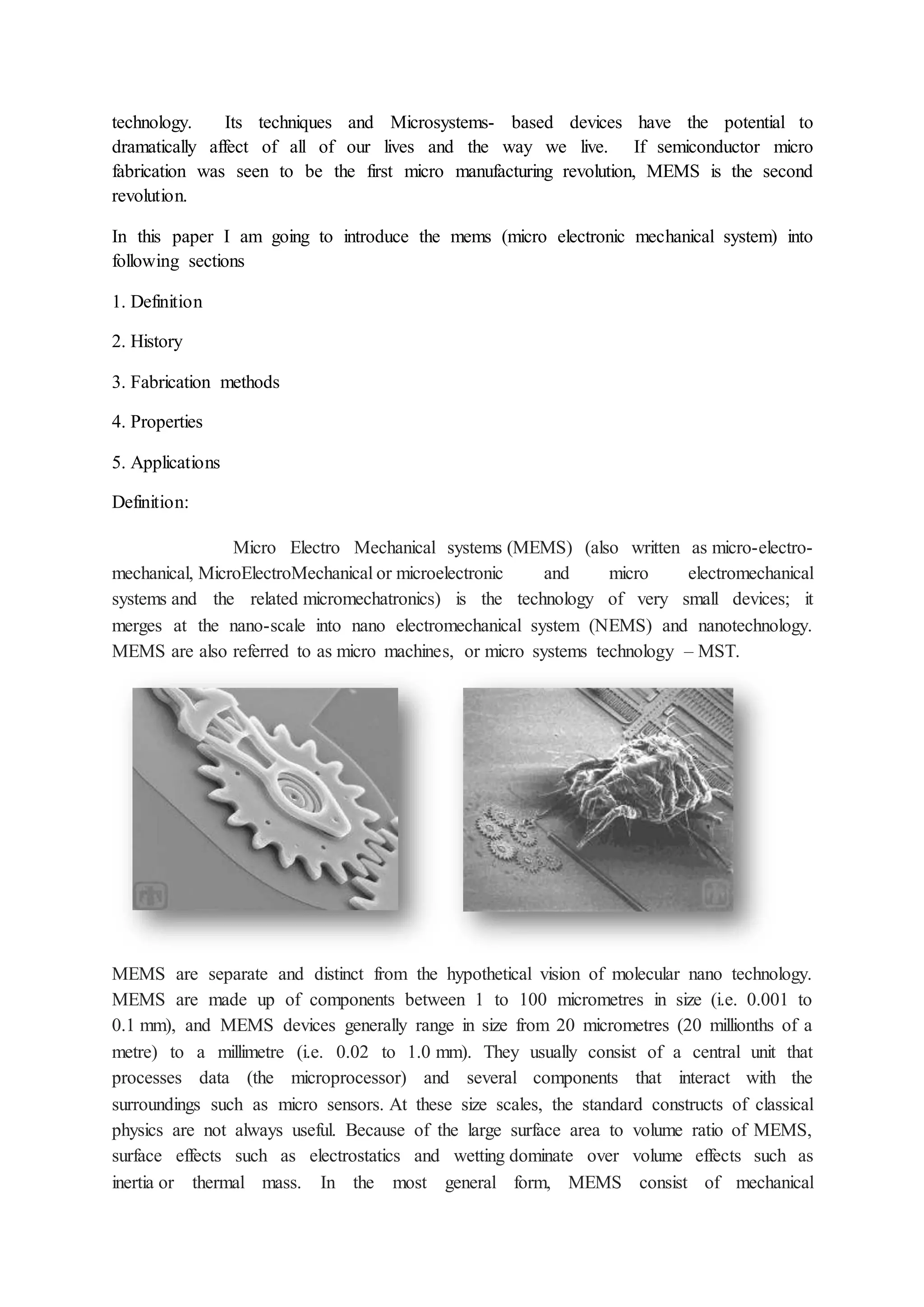
![microstructures, micro sensors, micro actuators and microelectronics, all integrated onto the
same silicon chip. Micro sensors detect changes in the system’s environment by measuring
mechanical, thermal, magnetic, chemical or electromagnetic information or phenomena.
Microelectronics process this information and signal the micro actuators to react and create
some form of changes to the environment
However, MEMS is not just about the miniaturization of mechanical components or making
things out of silicon. MEMS is a manufacturing technology; a paradigm for designing and
creating complex mechanical devices and systems as well as their integrated electronics using
batch fabrication technique
History:
When we are talking about mems (micro electronic mechanical system) need to
remembering the famous scientist prof. Richard Feynman. He worked in this project mems.
He inspired to design the mems by seeing objects of dentist drill (1mm), Artey (1mm),
muscle fibre (1micro-m). When he used to manufacture this mems he had a raised a doubt in
this how they going to useful to mankind. Let’s see how could he get solution for this
problem manufacture of integrated circuits, manufacture of transducers, these are instruments
used to store the data and it reuse when he wants(artificial data storing). Then he gets
solution. Let’s see how mems are going to develop in every 10 years
1950’s: 1958 Silicon strain gauges commercially available
1960’s:1961 First silicon pressure sensor demonstrated, 1967 Invention of surface
micromachining. Westinghouse creates the Resonant Gate Field Effect Transistor, (RGT).
Description of use of sacrificial material to free micromechanical devices from the silicon
substrate.
1970’s: 1970 First silicon accelerometer demonstrated, 1979 First micro machined inkjet
nozzle
1980’s:Early 1980’s:first experiments in surface micro machined silicon, Late 1980’s:
micromachining leverages microelectronics industry and widespread experimentation and
documentation increases public interest,1982 Disposable blood pressure transducer,1982
“Silicon as a Mechanical Material” [9]. Instrumental paper to entice the scientific community
– reference for material properties and etching data for silicon,1982 LIGA Process,1988 First
MEMS conference
1990’s: Methods of micromachining aimed towards improving sensors, 1992 MCNC starts
the Multi-User MEMS Process (MUMPS) sponsored by Defence Advanced Research
Projects Agency (DARPA) 1992 First micro machined hinge, 1993 First surface micro
machined accelerometer sold (Analog Devices, ADXL50),1994 Deep Reactive Ion Etching is](https://image.slidesharecdn.com/c7fb91de-bf06-4c01-8b22-9ff9a18a6c8f-150214082521-conversion-gate01/75/Microelectronic-mechanical-system-3-2048.jpg)
